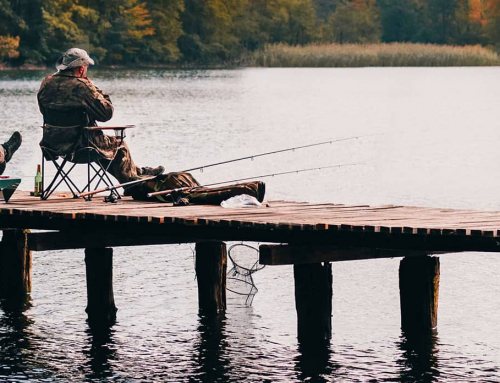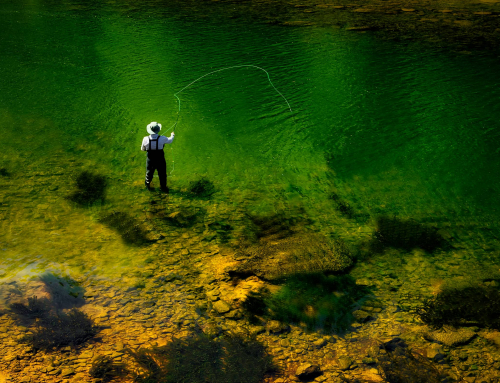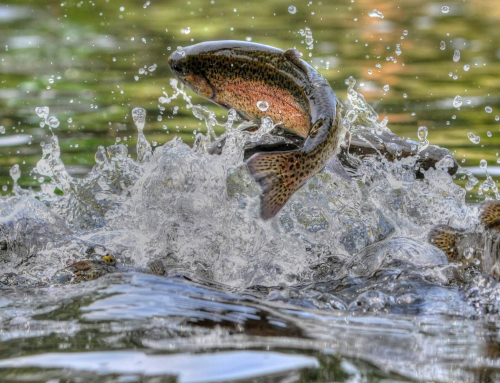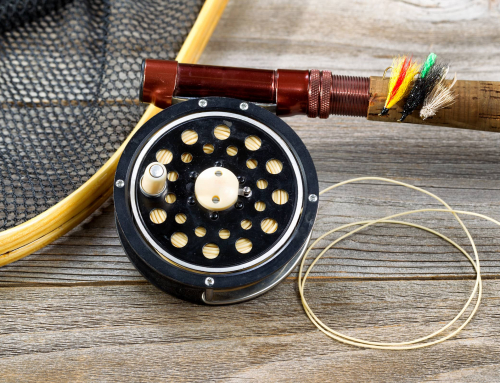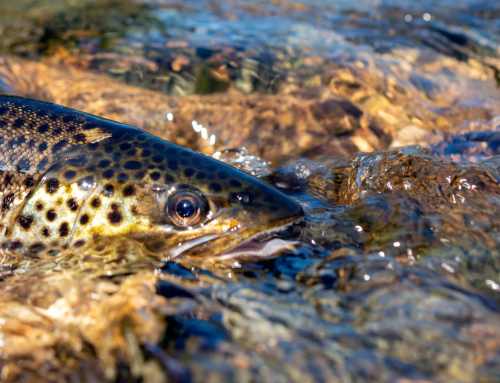We may earn money or products from the companies mentioned in this post at no additional cost to you.
Fly Fishing in a Pond
Let’s say you’ve just watched a River Runs Through It for the first time or can’t quit listening to your coworker tell his fly-fishing stories. Fly fishing is a fantastic hobby, and you’re ready to invest your time and resources to learn the art. There’s a big problem though – there aren’t any fishing spots in your local area. There are no rivers or gold metal waters, just ponds, and lakes. Can you fly fish in a pond?
The short answer – yes. You can fly fish anywhere you’d use traditional angling techniques, including ponds, lakes, and other bodies of water. Fly fishing a pond or lake is different than fly fishing a river but there are many similar techniques and equipment. Let’s learn more about fly fishing in a pond and how to land a big boy no matter where you’re fishing.
Fly Fishing Rivers vs. Ponds
Here’s the thing, fish don’t care if you’re using a spinning reel or a fly line. If it looks like food, fish are going to go for it. Fly fishing is customarily used in rivers and streams because fish found in those streams spook much more quickly than pond fish. You need the presentation and near invisibility of a fly line to catch trout and other river species. If you could use a spinning reel or bait caster to catch the same target species that you do with a fly line, more people would be out on the river with a spinning reel instead of a fly line and reel.
Though ponds can hold species you find in the river like rainbow trout, most ponds in North America have their own distinct group of species like bass, bream, crappie, and more. These pond species of fish tend to be much bolder and more aggressive than their river counterparts, which is why you can use a spinning reel or bait caster and not scare them away.
Not only is fly fishing a pond perfectly fine, you might be able to nag older and smarter fish that would say no to a typical line but can’t tell they’re being tricked on your fly line. You can use your fly line to fish for bass in the shallows or use it to nail crappie near a boathouse. You might not be able to see the fish you’re targeting as you would in the river, but they’re going to see your fly as a delicious meal.
Don’t worry, fly fishers, you can still match the hatch when you’re fly fishing in a pond. Pond species might not be as tuned in to the hatch as river species, but they do know common insects in their pond and are more likely to strike flies and bait resembling their natural diet. If there are bugs and hatching around a pond, you can bet it’s full of fish who will go after your flies.
You might even have a more productive day fishing the same spot as someone with more traditional angling equipment thanks to the minimal profile of a fly line.
Tips and Tricks for Fly Fishing in a Pond
Decide on a Target Species – You can target nearly any species in a pond or lake, but make sure your line is equipped to handle what you’re fishing for. You’ll need heavier equipment for bass than other species.
Time it Out – You want to time out pond fly fishing the same as you would traditional angling. This could include fishing shallow water early in the day and deeper water once the sun has warmed up. If you would target bass in the shallows in the morning with traditional angling, do the same for fly-fishing.
Choosing Flies – What flies you use while fly fishing in a pond is determined by the depth you’re fishing. If you’re fishing topwater bass, you can use a floating fly while you’ll want the sinking ability of nymphs and streamers if you’re fishing medium depth to deep fish. Again, you can use many of the same techniques for fly fishing a pong you would with a bait caster or spinning reel, and you can still match the hatch for better chances at landing a trophy.
No River No Problems
If you’re ready to start fly fishing, but you don’t have any significant rivers or traditional fly-fishing waters near your house, no worries, you can still get a lot from your fly line in the local pond or lake. Outfit your fly line for the right species, choose your depths carefully, and take advantage of your fly line’s almost invisible appearance to land some lunkers the legendary anglers can’t touch.
